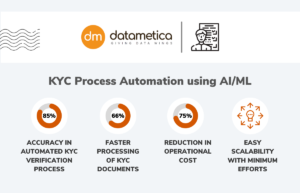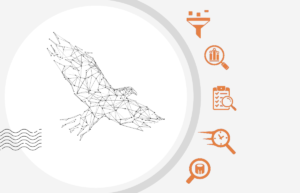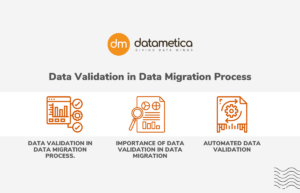Cloud migration is the key to a successful and comprehensive digital transformation – it enables businesses to be more agile, cost-effective, and innovative and allows them to move from capital-intensive software and hardware investments to a pay-as-you-use model.
The move to the Cloud has shot up significantly over the last decade. Research suggests the global cloud migration service market is expected to value up to $448.34bn by 2026. Businesses today can choose from a variety of cloud platforms based on their requirements. But even then, the steps involved in the migration process remain the same.
The journey to the Cloud can be challenging – many businesses struggle or have limited success with their migration projects. Throughout our years of experience in helping businesses migrate to the Cloud, we have prepared a comprehensive checklist of the major steps involved in every migration project that every organization needs to consider.

Important Steps of Cloud Migration
Assessment: Perform a detailed assessment of your current data platform as the first step of migration. The assessment phase helps in understanding the current data platform, patterns of data ingestion, processing, and consumption. It also provides an opportunity to come up with a high-level plan and approach for the migration.
Datametica leverages its state-of-the-art automated assessment tool – Eagle to help reduce the time and cost of the migration process by up to 50%.
Suggested read: Challenges in Data Migration Planning
Foundation Setup: After the assessment, you can either start with a POC/POV for one of the business use cases or go with the overall data platform migration based on the migration approach agreed upon during the assessment.
You should begin with foundation setup or cloud infra setup, collaborate with various stakeholders, and agree on the cloud platform design, architecture, security, and governance along with the cloud services required to implement the solution. At this stage, the automation of scripts (Infrastructure-as-a-Code) is crucial. Datametica can enable faster implementation through reusable automated scripts for foundation setup.
Design/Architecture: Based on the outcome of the assessment and migration approach define a high-level reference architecture that provides guidance for implementing various ingestion, data processing, and consumption patterns. Typically in most migrations, it is better to leverage the existing data model to fast path via the migration and testing efforts.
Build: For faster migrations, explore the opportunity to convert the existing code (ELT or ETL) through an automated process, this will help in saving time and cost which is of absolute importance for any large-scale data platform migration. Datametica’s automated code translation tool saves you time and money while allowing you to focus on the most important aspects of the migration.
Apart from the code conversion, the ELT or ETL pipeline integration is crucial. Integrate the code as per the design and architecture defined earlier, and leverage the existing enterprise scheduler/Cloud-based tool for scheduling/orchestration.
Test: Testing is an intensive process if performed in a traditional manner, as it involves writing test cases, executing test cases, triaging, and fixing the issues. During the testing phase ensure that the historical data and incremental load pipelines are tested using automation. You also need to ensure that the new pipeline is either meeting/better than the current SLAs.
Datametica recommends automated testing for data platform migration or modernization using our flagship tool Pelican. It helps in validating cell by cell by comparing the tables between the on-premise and cloud without writing a single line of code.
See how Pelican, our automated data validation tool, contributed to 90% cost savings in data validation in a migration project for a top US retailer.
Deploy: Once the model’s success has been verified, it should be deployed in a production environment. Businesses can either choose to deploy manually, with configuration management tools, container orchestration tools, or automatically.
Parallel Run: Following the deployment phase, the new platform is deployed alongside the previous one. Until the end of the migration, updates are uploaded simultaneously to each of these platforms. The legacy system is decommissioned once the new system has been validated.
Cutover: Cutover is the final step of the migration process. Once the implementation process is successfully validated, the client must prepare their resources for the decommissioning of the old system.
Conclusion
Successful cloud migration projects need comprehensive knowledge of the cloud provider’s services, cost structure, resources, and processes. Businesses need to exercise extensive assessment, testing, and validation of the migration process via in-depth planning and proof-of-principles projects to ensure a successful migration.
Datametica is an experienced partner that has helped many businesses successfully migrate to the Cloud with their data migration product suite. To learn more about our migration projects, initiate a conversation with us today.

Parashuram Bastawade
.
.
.
About Datametica
A Global Leader in Data Warehouse Modernization & Migration. We empower businesses by migrating their Data/Workload/ETL/Analytics to the Cloud by leveraging Automation.




2 Comments